Barge Cruise Travel Guide
Step onboard a river barge to learn about a new destination from a unique point of view, or return to a familiar location but see it with new eyes from the deck of a ship. Barges are great for learning because they travel at a slower pace than their larger river counterparts, covering a shorter distance to allow more time to become fully immersed in life along rivers and canals from France to Vietnam.
Cruising onboard a river barge offers an intimate, small group educational experience in a comfortable setting — barges are often converted 20th-century cargo ships. Similar to a floating bed and breakfast, you'll experience fresh, local cuisine, views of idyllic countryside and a slow sailing pace. During your educational voyage, many barges are equipped with bicycles so you can cycle alongside the barge or between villages during the day’s navigation. Experiencing a region of the world via its waterways can be an amazing way to get to know the landscapes, flora, fauna and more at a relaxed pace and from a different perspective.
Centered in France, Belgium and the Netherlands, journey farther into the countryside to off-the-beaten-path destinations and authentic experiences. Explore the French and German influences and fairy tale-like villages of Alsace-Lorraine while cruising along the Marne-Rhine Canal. Taste the flavors of France and absorb life in Provence, dotted with Roman ruins and inspiration for the likes of van Gogh and Picasso. Or, journey a little farther from home to learn about the traditional ways of life in Vietnam and Cambodia along the Mekong River.
Why Barge Cruises?
An educational experience by river barge offers a relaxed voyage with special advantages: A nimble barge offers a rustic setting that maximizes a quiet, yet social, atmosphere with your fellow passengers. These smaller boats can dock in the center of town and reach smaller towns that larger riverboats can’t access. You’ll get to observe daily life along the river while relaxing onboard a barge with no more than 24 passengers.
While leisurely sailing through a country’s interior, you’ll be able to learn about the heartland in a warm and inviting way. See what life is like beyond the big cities as the countryside gently rolls along and authentic culture takes center stage. These river and canal experiences feel little motion, as these waterways are calm and flat, with locks controlling the current of larger rivers.
The relaxed, more intimate experience is best embodied during down time on board and meals with your small group. These former cargo ships were converted to passenger vessels with an emphasis on public space — there is typically only one deck dedicated to a social environment and the bar, lounge and dining room are combined into a single space. When eating meals, enjoy an open-seating policy to sit with whomever you like; break bread with your fellow passengers while creating memories that will last a lifetime. Your meals will always feature the freshest ingredients as restaurant staff typically go into port each day to prepare authentic samplings of local cuisine.
Top Reasons to Travel by Barge with Road Scholar
Learn from Expert Faculty
Here at Road Scholar, learning is intrinsic to who we are and what we do. When you come on board a cruise with us, you’re embarking on an educational adventure with Road Scholar’s expert staff and local instructors who will be with you each step of your journey. While at sea, relax on board and take in a lecture about the next port in your itinerary or a fascinating topic that will wrap your whole adventure together. Then, set out on immersive shore excursions to gain a new appreciation for local life and culture firsthand.
Full Immersion in the Destination
Exploring a destination by barge is like taking a leisurely stroll through the countryside. You’ll feel like you’re truly “in” the destination. You’ll get a chance to learn about daily life along the shores as you go from destination to destination.
You’ll Learn About a New City Every Day
Because you’re traveling along a river rather than hitting the open sea, you’ll drop anchor in a new city every day on most of our barge programs. You’ll spend less time on the river and more time on land immersing yourself in the local culture!
Barges Mean Greater Access
With no more than 24 participants, Road Scholar sails on barges that access destinations other ships can't reach. Some cities — especially in Southeast Asia — were built on river access and are still hard to reach by land. Entering town from the river adds an extra hint of authenticity and removes the headache of learning how to get there. Once in port, our ships can dock on the side of a canal or pull up in the center of town, so you can walk off the boat and immediately feel a connection. You get to explore smaller port towns where “everyday life” is happening, which gives you a chance to dive deeper into the culture of the place you’re visiting.
More Barge, Less Bus
Throughout your cruise, you will likely travel between 30 and 50 miles for an authentic and immersive experience. When the barge is doing most of its sailing during the day, you can enjoy a glass of wine with your view from the deck and endless amounts of space and fresh air. You can also enjoy a Road Scholar lecture on board most barges, or cozy up in your cabin with a good book as you travel.
Enjoy the Friendly Vibe
Another benefit of traveling by barge is the intimate atmosphere aboard the barge. There are fewer passengers on board, which allows you to get to know your fellow group members and crew along with other folks traveling on the barge. Most barges only have a handful of crew members including the captain and the chef, so you’ll get to know the staff and top-notch service. The only downfall is having to leave your new friends when you disembark!
Unpack Once
Traveling by barge is a great way to learn about many different towns or cities without having to pack and unpack your bags as you move from hotel to hotel. We often say that barges are like a “floating bed and breakfast,” and that’s just the experience you’ll get on a barge program. You can really settle in and let the barge become your home away from home for your journey!
Educational Barge Cruises
Access centrally-located ports that larger vessels can’t reach as you voyage along Europe and Southeast Asia’s rivers and canals by barge. These learning adventures offer simple accommodations on barges that are akin to a floating bed and breakfast, carrying up to 24 people.
10+ Number of educational barge cruises with Road Scholar See them all
Barge Cruise Travel Tips

Travel at a more leisurely pace
At its core, a barge cruise is a slower paced form of travel. Most barges sail at speeds of less than 5 miles per hour and rarely cover more than 50 miles over the duration of their journey. Over the course of a week-long itinerary, you’ll gain an appreciation for the local landscapes and culture as each port will be within the same region.
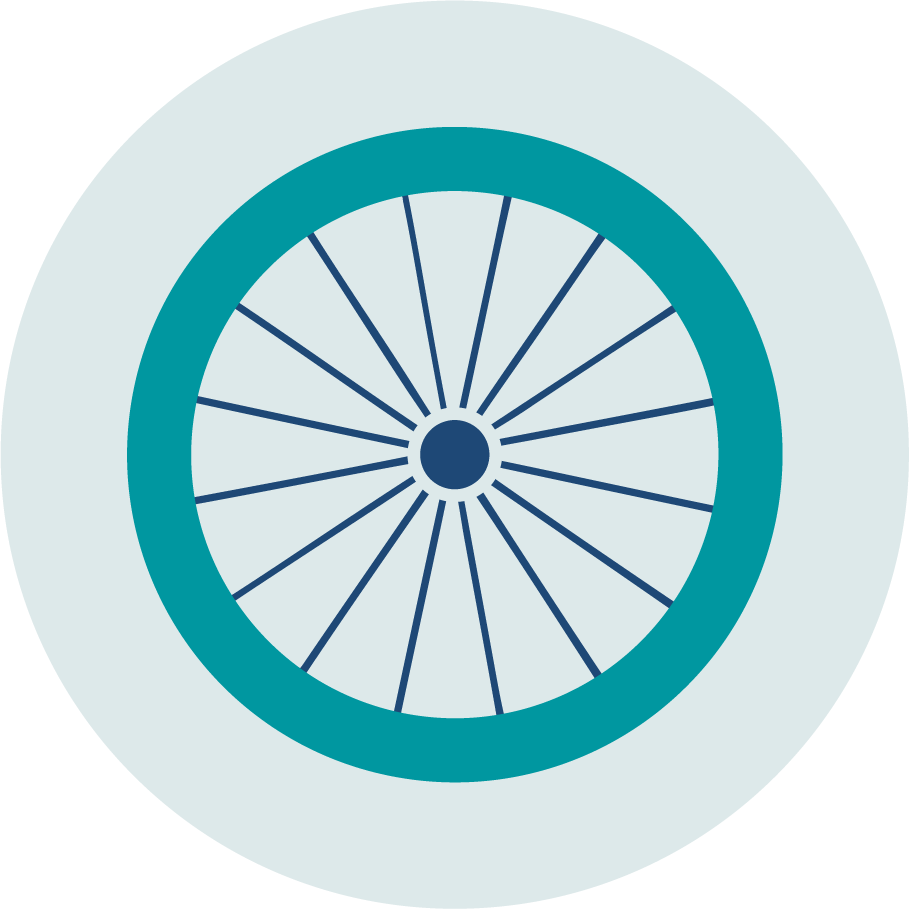
Cycle on the Side
One of our favorite parts of barge cruises are the bikes on board! Take the bikes out for a spin along the tow paths lining the various rivers and canals. As the barge is coasting at a leisurely 4 miles per hour, glide along the paths to tiny villages for an opportunity to truly experience daily life and interact with locals along the way. Getting on and off the barge is hassle-free at various locks along the route.

Plan Ahead to Prevent Motion Sickness
It’s hard not to mention the elephant in the room — seasickness. In general, barges move over flatter, calmer waters, so the likelihood that you’ll feel queasy is much lower than on an ocean cruise. But there’s always a chance you might feel the river’s rolling waters more than you’d like. Plan ahead and bring enough motion-sickness medicine for the entirety of your trip, just in case. Some motion-sickness medications can cause drowsiness, so try out different brands before your trip, and if you have a history of seasickness, take the pills before you get sick as a preventative strategy.

Disconnect from tech to connect with life on the river
Many barges are equipped with Wi-Fi on board, but an Internet connection isn’t always the most reliable. But disconnecting from your phone, tablet and computer can actually make your travels much more relaxing and can help you focus on what you’re learning along the way. Our advice? Plan to disconnect from the outset and leave your electronics at home during your barge cruise. Immerse yourself in life along the river.
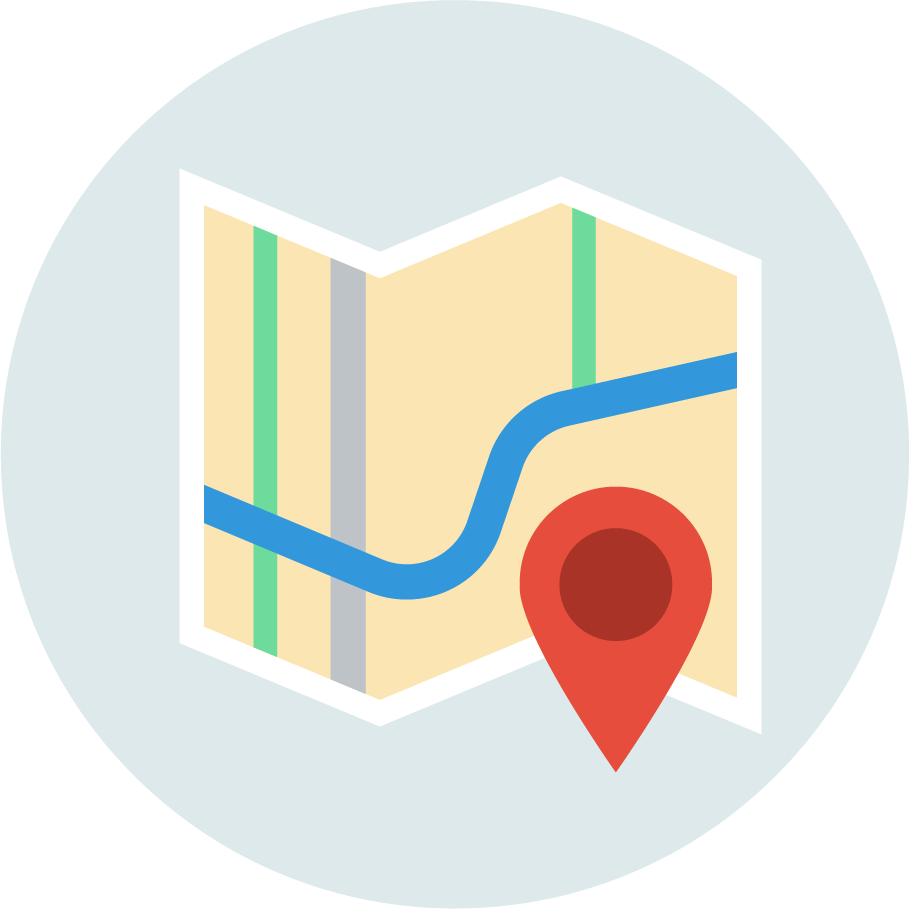
Know your ports
If you leave the barge on your own, make sure you know how to get back! The barge’s front desk will be able to provide maps for each port of call along the cruise. Before you disembark, ask at the front desk of your barge to find out where your ship is docked and get a description of how to tell a local cab driver to get back so you make it back safely and on time.
Educational River Barge Cruises
See AllOur Favorite River Barges
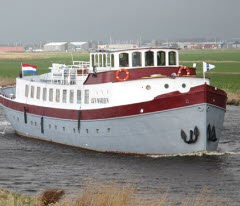
Once a seafaring freight logger built in the early 20th century, Liza Marleen was completely rebuilt in 1997-98 and renovated once more in 2015-16 to become a more luxurious vessel. With 10 cabins accommodating up to 22 passengers, it sails the waterways of Belgium and the Netherlands. While onboard, enjoy a spacious roof terrace, a salon and complimentary bicycles.
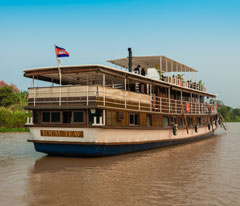
The only true river vessel sailing the Mekong, CF Mekong’s Toum Teav can sail from Siem Reap to the harbor of Ho Chi Minh City. Built in 2001 and refurbished in 2013 in the French Colonial style, 10 cabins lined with local materials can accommodate up to 20 passengers on two decks. Enjoy fresh Vietnamese cuisine in the open-air dining room and a well-stocked library while onboard.

Sailing the charming canals of Provence, CroisiEurope’s Anne-Marie was built in 2014. Its sister ship, CroisiEurope’s Madeleine, was also built in 2014 and navigates the Rhine-Marne Canal in Alsace and Lorraine. The three-deck barges have 10 double-occupancy cabins and one cabin for passengers with reduced mobility for a total of 22 guests. Offering panoramic views in a casual but elegant atmosphere, relax on the sun deck, lounge bar, main restaurant and hot tub. Complimentary bicycles are on board.
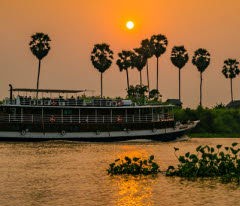
- CF Mekong
- CroisiEurope
- International Barging Tours (IBT)
“This adventure was fantastic! Our Group leader, Chef Pierre and the entire crew of the Anne-Marie made this program an absolute delight. The meals were delicious, the field trips meaningful and onboard lectures well done and informative.”
— Margaret from Lumberton, N.J. —
Cruising by Destination
Venturing through the countryside by barge is an experience vastly different from any other type of cruise. Leave the big cities behind for a taste of authentic life in smaller villages inaccessible to larger riverboats. The relaxed pace of sailing lends itself to more time at each destination and opportunities to experience the countryside firsthand with the option to cycle from village to village. Navigate the rivers and canals of Europe and Southeast Asia for a glimpse into villages where traditional cultures live on.
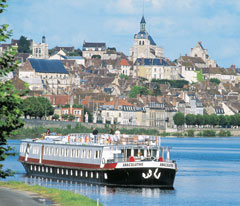
With more than 1,500 miles of canals connecting the major rivers, France is Europe’s premier barging destination. Built in the 18th and 19th centuries to transport goods including timber and coal, they are now home to refurbished barges navigating the shallow waters. From Provence in the south to Alsace and Lorraine to the northeast, barges sail from more well-known locales such as Avignon and Strasbourg to smaller, off-the-beaten-path villages that might otherwise have flown under the radar. Delve into the best parts of French culture among vibrant lavender fields, world-renowned vineyards and varied influences that have shaped France as we know it today.
In the sun-splashed fields of Provence, sail to villages harboring Roman ruins and vast markets brimming with the smells of fresh herbs and spices. Delight as the barge navigates the Rhône River and farther into the countryside along the Mediterranean, exploring the sights that inspired the likes of van Gogh and Picasso. The leisurely pace of a barge cruise is a perfect complement for Provençal life.
In Alsace and Lorraine, discover charming villages fresh out of a Disney fairytale, complete with flower-lined canals and half-timbered homes. In regions that are decidedly French, German influences are abundant in the architecture, cuisine and customs. The scenic villages of Alsace and Lorraine — often with their medieval character still intact — dot the landscape among dense forests and the remains of feudal castles. Learn the regions’ complex history as you sail among some of France’s most stunning scenery.
Learn more about barge cruises in France.
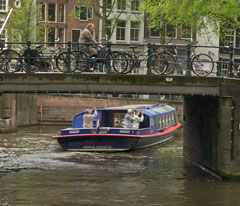
When you think of canals with smaller boats gracefully gliding along, it is impossible to overlook Amsterdam. Travel back in time to the prosperity of the Dutch and Flemish Golden Age, when magnificent Gothic towers soared over city centers and artists including Rembrandt, Frans Hals, Johannes Vermeer and Peter Paul Reubens contributed to the advancement of European culture. From Bruges iconic belfry to Amsterdam’s photogenic townhouses, float and cycle across the countryside perfectly designed for barge cruises. Delve beyond the windmills at Kinderdijk and world-famous tulip fields to explore canal-lined medieval villages, artistic treasures and architectural masterpieces that give Belgium and the Netherlands their own unmistakable personalities.
In Belgium and the Netherlands, canals are an integral part of daily life and a point of national pride. Cities including Amsterdam, Utrecht, The Hague, Haarlem, Brugge and Gent have intricate canals, built as early as the 17th century for both commercial trade as well as for defensive purposes. Vast networks of rivers and canals weave their way through the countryside, connecting towns and villages alike to the North Sea. In Belgium, the transportation minister made it a national priority following World War II to develop an extensive network of canals that has created a transportation infrastructure on par with larger countries’ rail systems.
Learn more about barge cruises in Belgium and the Netherlands.
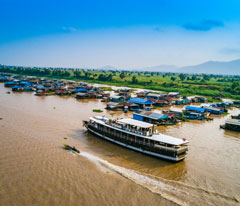
Cruising along the Mekong River is an experience rivaled by no other; a gateway to a region of the world steeped with local traditions and stunning scenery. Once an ancient city lost to the jungle, the complex of Angkor Wat has become one of the world’s iconic sunrise views and a can’t-miss experience when visiting Cambodia. For a more modern twist, French colonial architecture and vast markets serving traditional dishes and delicacies adorn Ho Chi Minh City’s elegant boulevards. But wait, there’s more. Watch as Buddhist monks quietly carry out their daily chores and meet fishermen returning with the days’ catch. The Mekong River weaves remnants of vast empires, the source of livelihood for millions from China to Vietnam and modern states emerging into the global community into a single, cohesive narrative.
Off the beaten path from the typical European cruise experience, a barge cruise in Southeast Asia offers better accessibility on rivers that larger riverboats can’t navigate. Much of Cambodia and Vietnam’s riverbanks are free of urban development and continue to sustain a traditional way of life. Specialized barges are able to sail the middle stretches of the Mekong River with their shallow draft to allow one seamless cruise between the legendary temple complexes of Siem Reap to the north and the bustling streets of Ho Chi Minh City to the South. Throughout your journey, you’ll discover a river that is a lifeline for millions of people including rice farmers and fishermen who return to stilted villages after a day’s work.
Learn more about barge cruises in Southeast Asia.
“I thoroughly enjoyed cruising the canals of Alsace, exploring Strasbourg and learning about the regions’ complicated history. Our Group Leader was a top-notch expert in the region where she grew up. The crew of the barge Madeleine treated us wonderfully — and kept us very well fed.”
— Gerry from Beaverton, Ore. —
Frequently Asked Questions
What barge lines does Road Scholar work with?
Road Scholar works with a number of cruise lines to provide an authentic regional experience, using regional companies with a local crew whenever possible. These cruise lines include CroisiEurope, CF Mekong and other locally run companies that can offer the best insight into new regions.
How many passengers will be on board?
Barge cruises may range from six to 24 passengers when cabins are filled to double occupancy. Most barges are converted cargo or freight vessels, so space on board is masterfully allocated for smaller, intimate cabins and plentiful social space from which to enjoy the scenery drifting by. In addition to any staff provided by the cruise line, there will always be a Road Scholar Group Leader on board and additional local experts may join for an evening lecture or other opportunities to enhance the experience.
Do all cabins have windows or balconies?
While each barge is different, each cabin has windows that allow in plentiful amounts of light. There are currently no operating river barges with balconies but you may find French balconies. Instead, each barge has a sun deck with lounge chairs. CroisiEurope’s Anne-Marie and Madeleine both have hot tubs at the front of the barge from which you can relax and bask in the countryside.
Will there be entertainment on board?
Local, authentic entertainment may be offered during the cruise but can’t be counted on each evening while you are aboard. When there are performances, they often feature local artists or musicians who entertain in the ship’s bar or lounge area as opposed to stage productions that are becoming more common on larger ships. The smaller, intimate performances are a great representation of the relaxed vibe of the barge experience.
What type of restaurants are on board?
Barges only have one restaurant on board in addition to a lounge that serves snacks, coffee and tea through the day. Breakfast is served as a buffet while dinner is a multi-course meal served in a single sitting. Lunches will vary between buffet and plated table service depending on the cruise line and the activities planned for the day.
Can the chef accommodate meal restrictions?
The chefs aboard barges are flexible and will do their best to accommodate dietary restrictions. The course menu will be posted ahead of time so passengers can ask for a substitution if they would like. To understand the options available, talk to the group leader or the chef.
Is Wi-Fi available on board the riverboat? How much does it cost?
The availability of Wi-Fi on board varies by cruise line. Wi-Fi is often available, though it may not be reliable except when in port — the bandwidth will often be limited, ideal for a quick email or check-in, but not suited for browsing the web or uploading photos. Wi-Fi is often complimentary, but be sure to check your program materials for details.
Are shuttle services provided in each port?
One of the best parts about barges is they can dock in the center of town. Many of the ports they visit — especially in Europe — are historic towns built on the river, since they were the primary form of transportation.
Can I pay with cash and credit card on board?
Barges will accept cash and credit cards while on board. Many cruise lines accept U.S. dollars while on board, as well as the local currency, and some may offer services converting currencies. More often than not, most European cities do not accept U.S. dollars. When in Asia, U.S. dollars are widely accepted in most major cities. It is always a good idea to carry small bills in the local currency for when you are in port; there may be a minimum purchase amount required to use your credit card.
Does the ship sail at night?
Barges typically cruise during the day and tie up at the side of the canal during the night. Sailing during the day is one of the highlights of barge cruising because it allows for the opportunity to admire the towns and countryside along the riverbanks between ports of call.

